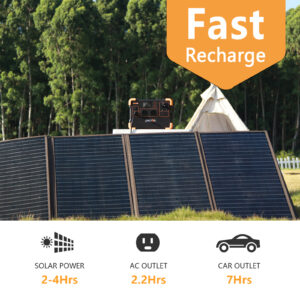COP28 Goals with Solar Power Generators
In a world where the demand for clean, renewable energy is at an all-time high, solar power has emerged as a shining star. And now, with the eagerly anticipated COP28 conference just around the corner, the spotlight is set to shine even brighter on solar power generators. As nations come together to tackle the pressing issue of climate change, the focus on harnessing the power of the sun has never been more intense. COP28, the 28th annual Conference of the Parties to the United Nations Framework Convention on Climate Change, promises to be a game-changer for the solar power industry. With key stakeholders, policymakers, and industry leaders gathering to discuss and shape the future of renewable energy, solar power generators are poised to take center stage. Join us as we delve into the exciting developments and innovations that COP28 is set to unleash, and discover how solar power is set to revolutionize the way we generate electricity. Get ready to witness the rise of the sun!

The rise of solar power generators
Solar power generators have witnessed a remarkable rise in popularity over the past decade. This surge in interest can be attributed to several factors. Firstly, solar power is a clean and renewable energy source, making it an attractive alternative to fossil fuels. As concerns about climate change and air pollution continue to grow, governments and individuals are increasingly looking to solar power as a sustainable solution.
Secondly, the cost of solar power has significantly decreased in recent years. Technological advancements and economies of scale have made solar panels more affordable and accessible to a wider range of consumers. This has led to a boom in the installation of solar power systems, both at the residential and commercial levels.
Benefits of solar power
Solar power offers numerous benefits that make it an attractive choice for energy generation. One of the key advantages of solar power is its environmental impact. Unlike fossil fuels, solar power does not release harmful greenhouse gases into the atmosphere, making it a clean and sustainable energy source. By harnessing the power of the sun, we can reduce our reliance on fossil fuels and mitigate the negative effects of climate change.
Another benefit of solar power is its ability to provide energy independence. With solar panels installed on rooftops or in solar farms, individuals and communities can generate their own electricity, reducing their dependence on the grid. This not only saves money on electricity bills but also provides a reliable source of power, especially in remote or off-grid areas.
Solar power generator technology and advancements
Over the years, solar power generator technology has made significant advancements, improving efficiency and performance. One of the key innovations in solar power technology is the development of photovoltaic (PV) cells. These cells convert sunlight directly into electricity, allowing for efficient energy generation. The efficiency of PV cells has increased steadily, making solar power a viable option for large-scale electricity production.
In addition to PV cells, other technological advancements have also contributed to the growth of solar power. Energy storage systems, such as batteries, have become more efficient and affordable, enabling solar power to be stored and used during periods of low sunlight. This has addressed one of the main challenges of solar power generation – its intermittent nature.
Case studies of successful solar power projects
Numerous successful solar power projects around the world serve as shining examples of the potential of solar energy. One such project is the Noor Complex in Morocco, the world’s largest concentrated solar power (CSP) plant. With a capacity of 580 megawatts, the Noor Complex provides clean energy to millions of households in Morocco, reducing reliance on fossil fuels and lowering carbon emissions.
Another notable solar power project is the Kamuthi Solar Power Project in India. This project, with a capacity of 648 megawatts, is the largest single-site solar power plant in the world. It covers an area of over 2,500 acres and generates enough electricity to power over 150,000 homes. The success of these projects demonstrates the potential of solar power to meet the growing energy demands of countries around the globe.
COP28 initiatives supporting solar power generation
COP28 presents a unique opportunity for key stakeholders, policymakers, and industry leaders to come together and discuss the future of renewable energy, with a specific focus on solar power generation. The conference aims to foster collaboration and knowledge sharing among nations, promoting the adoption of sustainable and clean energy practices.
At COP28, several initiatives are expected to be launched to support solar power generation. These initiatives may include financial incentives, research and development programs, and policy frameworks to encourage the adoption of solar power technologies. By providing support and resources, COP28 seeks to accelerate the growth of the solar power industry and pave the way for a sustainable energy future.
Challenges and solutions in solar power generation
While solar power has experienced tremendous growth, it still faces several challenges. One of the main challenges is the intermittency of solar energy. As the sun sets or clouds cover the sky, solar power generation decreases, leading to a reliance on backup energy sources. However, advancements in energy storage systems, such as batteries, are addressing this challenge by providing a means to store excess solar energy for later use.
Another challenge is the high upfront cost of installing solar power systems. Although the long-term savings from reduced electricity bills can offset these costs, the initial investment can be a barrier for many individuals and businesses. To overcome this challenge, governments and financial institutions are offering incentives and financing options to make solar power more affordable and accessible.
Government incentives and policies for solar power
Governments around the world have recognized the importance of solar power in achieving their renewable energy targets. As a result, many countries have implemented various incentives and policies to encourage the adoption of solar power. These incentives may include tax credits, grants, feed-in tariffs, and net metering programs.
For instance, in the United States, the federal government offers a solar investment tax credit (ITC) that allows homeowners and businesses to deduct a portion of the cost of installing a solar power system from their taxes. Similarly, countries like Germany and Australia have implemented feed-in tariffs, which guarantee a fixed payment for electricity generated from solar power systems and fed back into the grid.
How businesses can integrate solar power into their operations
Businesses play a crucial role in driving the adoption of solar power. By integrating solar power into their operations, companies can reduce their carbon footprint, lower energy costs, and enhance their sustainability credentials. There are several ways businesses can embrace solar power.
Firstly, installing solar panels on rooftops or in open spaces can generate clean energy to power operations. This not only reduces reliance on the grid but also provides a stable and long-term source of electricity. Additionally, businesses can explore power purchase agreements (PPAs), where they purchase solar power from third-party providers at a fixed rate, avoiding the need for upfront investment in solar infrastructure.
The future of solar power generation
The future of solar power generation looks bright. With ongoing technological advancements and increasing affordability, solar power is poised to become a dominant player in the global energy mix. As the world transitions towards a low-carbon economy, solar power will play a pivotal role in meeting the growing energy demands sustainably.
Furthermore, the continued focus on renewable energy at events like COP28 will drive further innovation and collaboration in the solar power industry. As countries and businesses recognize the economic and environmental benefits of solar power, investments in research and development will accelerate, leading to even more efficient and cost-effective solar power solutions.
Conclusion
As the world grapples with the challenges posed by climate change, solar power has emerged as a promising solution. The upcoming COP28 conference provides a platform for the solar power industry to showcase its potential and shape the future of renewable energy. With advancements in technology, supportive policies, and increasing awareness about the benefits of solar power, we are witnessing the rise of the sun as a dominant force in the global energy landscape. Let us embrace the power of the sun and usher in a sustainable and brighter future for generations to come.

